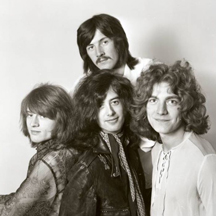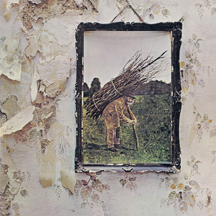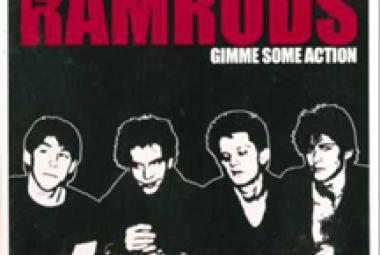

Led Zeppelin – Led Zeppelin IV (1971): Led Zeppelin grew out of the dregs of the Yardbirds – one of my favorite British Invasion bands – and had a sort of placeholder name of the New Yardbirds at the time of their formation in 1968. The name Led Zeppelin is a takeoff on “lead balloon” – as in, “it went over like a lead balloon” – since Keith Moon and John Entwhistle of the Who expected that kind of reaction to the nascent band. Boy, was that ever not the case: Led Zeppelin is one of the biggest rock bands in history, with sales of an estimated 200 to 300 million albums. Led Zeppelin IV itself is one of the largest selling albums of all time, ranking #5 in U.S. sales with a certified 23 million albums sold. Their entry at the Rock and Roll Hall of Fame calls Led Zeppelin as influential in the 1970’s as the Beatles were in the 1960’s. A zeppelin is a type of airship, with the most famous such craft, the German passenger airship called the LZ 129 Hindenburg, having burned in a disastrous fire in New Jersey in 1937. A photograph of the Hindenburg disaster is given on the front cover of Led Zeppelin, and Led Zeppelin II also has a stylized image of the fire. Their first four albums were released in less than three years; since the second and third albums – Led Zeppelin II and Led Zeppelin III – are identified with Roman numerals, most people call their fourth album Led Zeppelin IV. Officially, the album has no name. It is commonplace for rock bands and other recording artists to release their debut album – such as Led Zeppelin’s first album Led Zeppelin – with just the name of the band or artist, and that sometimes happens with later albums. They are often referred to as “eponymous” albums. No one took it further than the former bandleader of Genesis, Peter Gabriel: His first three solo albums are all eponymous albums. In the absence of a title, various labels have been attached to the album over the years besides my preference, Led Zeppelin IV: Untitled, IV, Runes, ZoSo, Four Symbols (or even the actual symbols themselves), etc. The “symbols” are given on the record label and are about the only identifying marks on the entire album. The first symbol could be read as “ZoSo”, but none of the symbols look much like runes to me. I bought Led Zeppelin right away; Led Zeppelin’s first American tour had brought them to the Dorton Arena at the North Carolina State Fairgrounds right down the road from where I was attending college in my freshman year at North Carolina State University, and at least one of my suitemates had been to the concert and loved it. I got their second album Led Zeppelin II quickly as well; that was a #1 album with a top hit “Whole Lotta Love”. From what I heard on the radio, I was not so enamored with Led Zeppelin III and put off that purchase for a while. I used to hear some new Led Zeppelin music through the wall of my apartment during my junior year in college and simply could not believe how great it was. It seemed like I was always half-asleep when I heard the song, and I sometimes wondered if I were dreaming; but eventually, I figured out that I was hearing “Stairway to Heaven”, by far the best-known song by Led Zeppelin and the closing track on Side 1 of Led Zeppelin IV. Despite never having been released as a single, “Stairway to Heaven” was the most requested and most played song on rock radio stations during the 1970’s, and it continued to be played on the radio seemingly nonstop for many more years (not that there is anything wrong with that!). Although its length is nearly eight minutes, I don’t believe that I have ever heard a shortened version of “Stairway to Heaven”. As wonderful as that song is, the other music on Led Zeppelin IV is every bit as good. For the only time in their history, Led Zeppelin brought in guest musicians for this album. The legendary singer for Fairport Convention, Sandy Denny sings a duet with Led Zep lead vocalist Robert Plant on “The Battle of Evermore”; this song is all that most Americans have heard from Sandy Denny, but at least they have heard that. Like the four bandmembers in Led Zeppelin, Sandy Denny also got a special symbol by her name. Led Zeppelin tears through a song called “Rock and Roll” that is as great as any song by that name has to be; frequent Rolling Stones pianist Ian Stewart – Stewart was an official bandmember in the Stones early in their history – accompanies Led Zeppelin on that song. “Going to California” is a lovely acoustic song that is a departure from the rest of the album. But every song is a classic, simple as that.





